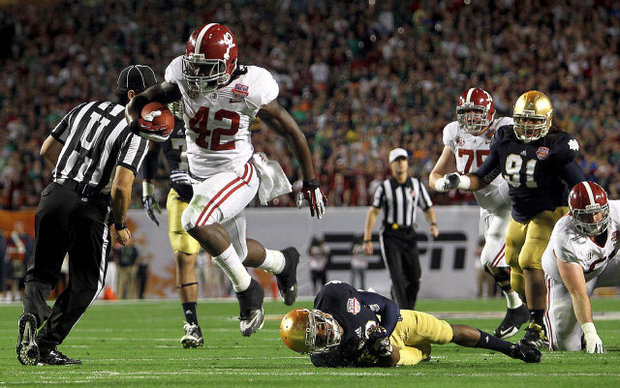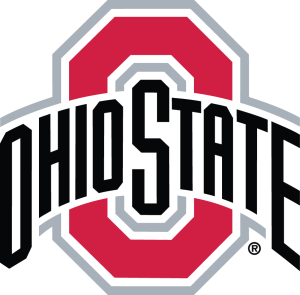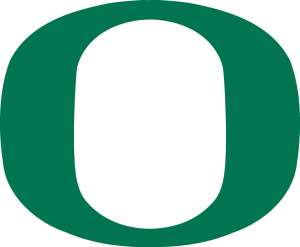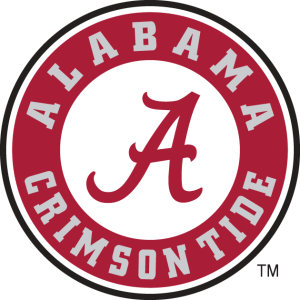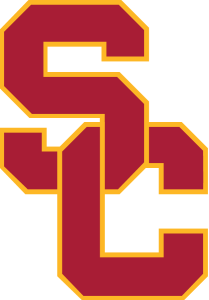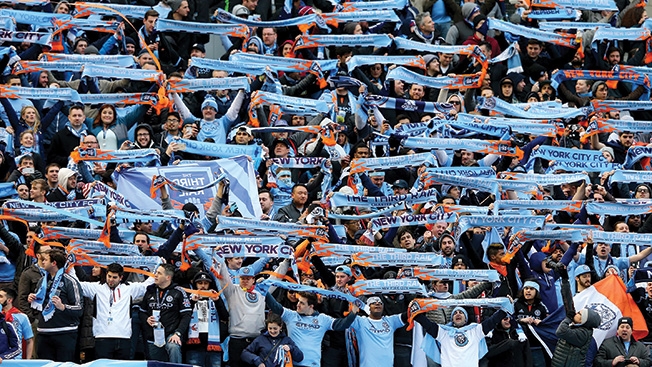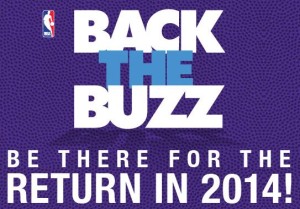The Masters: A Brand Unlike Any Other
The calendar has turned to April, and (for some of us) spring has arrived. In the sports world, this is the time when all eyes are turned to Augusta, Georgia for an annual rite of spring and one of the most famous sporting events in the world: the Masters.
In the immortal (and trademarked) words of longtime broadcaster Jim Nance, the tournament is “A tradition unlike any other.” From a branding standpoint, this holds true as well. The Masters’ brand strength is the foundation of much of its notoriety and prestige.
It’s one of the entities that transcends the sports world and is known across the spectrum of golf fans, from the dedicated spectators who spend thousands of dollars and countless hours to witness it live to those who wouldn’t know a birdie from a driver.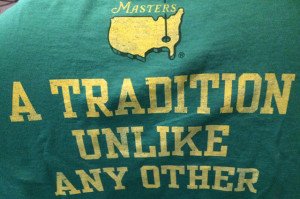
Part of this can be attributed to the longevity of the tournament and its place in popular culture, while much of it speaks to the strength of itself as a brand. The Masters is one of the few sporting events that can call itself a “brand” in the true sense of the word, complete with a well-known and revered logo, visual identity, name, strategy, etc.
One of the strengths of the Masters’ brand is that for the most part, it’s been the same for the majority of the tournament’s 80 editions. From the pristine Augusta National Golf Club and low-priced pimento cheese sandwiches to the winner’s green jacket and ceremonial opening tee shot, the tournament has fully embraced its tradition, making it a key part of its brand.
Even in the current landscape of unending corporate sponsorship and logos placed anywhere you could imagine, the Masters has maintained much of the same mindset in this area. There are no corporate signs on the grounds of the course, and corporate “partners” are limited to just five brands – who are given a combined four minutes of broadcast ad time per hour, must comply with the no signage decree and are given strict rules on how they can promote their connection with the tournament. The Masters has never been about the business side of the equation, and as the world around it has changed, the committee in charge of the tournament has resisted the need to change for change’s sake, sticking with what they feel works best for them.
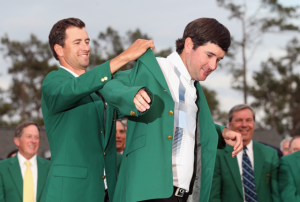 This is a lesson many brands can relate to, especially when it comes to their internal brand and brand characteristics. Just because the marketplace is moving in one direction, if it doesn’t make sense for you, staying true to who you are as a brand is infinitely more important than trying to keep up with everyone else. In fact, much like it has with the Masters, chances are this restraint will become one of your brand’s most enduring elements.
This is a lesson many brands can relate to, especially when it comes to their internal brand and brand characteristics. Just because the marketplace is moving in one direction, if it doesn’t make sense for you, staying true to who you are as a brand is infinitely more important than trying to keep up with everyone else. In fact, much like it has with the Masters, chances are this restraint will become one of your brand’s most enduring elements.
Another branding best practice that can be taken from the tournament is to embrace who you are and set a strategy of winning in your space. Don’t try to be everything for everyone, but try and be the best at what you do. The Masters isn’t the biggest sporting event in the country, nor does it appeal to the largest audience. But the tournament knows who its target audience is, knows where in their space they live, and have set out to stand atop that particular mountain. Among golf fans and golfers, there are few places more illustrious than Augusta National and few weeks as anticipated as tournament week, and they have catered their brand around this group, banking on their best qualities to then be passed on from this core group to a wider audience.
This tactic can work for brands of all industries as well – never underestimate the power of word of mouth advertising and brand connotations. Even if there is an audience who doesn’t have firsthand experience with your brand, or if they sit just outside your core market, if you have a high enough quality brand and build enough brand equity, the word will get out, and your secondary markets will grow closer to your core and build your brand even more.
Image Source 1
Image Source 2
Feature Image Source
Addison Whitney's quarterly newsletter, Forward, is bursting with branding news and insights - and we love to share what we know! Sign up here.
Branding Cinderella - How March Madness Success Grows Small School Brands
Up until 2008, tiny Davidson College in Davidson, N.C. was little-known to most outside of the local population and a few die-hard basketball fans who remember the school’s glory days on the court in 1960s. But over a few days in March of that year, the Wildcats, led by future NBA MVP Stephen Curry, made a miraculous run all the way to the Elite Eight of the NCAA men’s college basketball tournament.
Almost overnight, the 1,800-student school was on the national radar, and its brand experienced a boom in exposure that many smaller institutions would love to have.
For these schools, national exposure comes along very rarely (if ever), often in the form of the football team going to a bowl game, an academic breakthrough or, at the top of the exposure list, an invite into the exposure behemoth that is March Madness.
What takes an entire season of success coupled with an unblemished run through their conference tournament culminates in hearing their name called on Selection Sunday (another branded term) and a spot on the bracket. This inclusion provides a seat at the table and in the tens millions of brackets printed, researched, debated, analyzed, filled out and monitored by people around the world.
What better time to build your brand, especially if you are in the middle of a major rebrand and are looking to push your new name/logo forward into mainstream use?
The University of Arkansas at Little Rock (UALR for short) – a school with a self-admitted long-winded name – recently went through a rebranding effort, which included changing its athletic teams naming from the UALR Trojans to simply the Little Rock Trojans. Gone is the University of Arkansas precursor, and here to stay is more of a focus on the school’s home city. The new branding efforts also included updated logos, uniforms, websites, font choices and many more brand elements that are familiar to a corporate rebrand.
What to learn more about how you can build your brand? Let's talk.
Then their men’s basketball team went out and did the new brand the biggest favor it could – steamrolling through the Sun Belt conference regular season and tournament to lock in a spot in the  Big Dance, guaranteeing that those brackets would all include the words “Little Rock” when referring to the school. This not only gained exposure for the new brand, but also helped to quicken the old UALR branding into the history books.
Big Dance, guaranteeing that those brackets would all include the words “Little Rock” when referring to the school. This not only gained exposure for the new brand, but also helped to quicken the old UALR branding into the history books.
The benefits aren’t just to the long-term branding success of the schools. Immediate (and long lasting) financial growth is a common side effect of an appearance in the tournament, which is increased substantially with each round of advancement for the team.
Millions of dollars are distributed by the NCAA to individual conferences based on the success of their member institutions, in addition to the uptick in sponsorships, ticket and merchandise sales, donations and licensing deals. For some schools, a single trip deep into the tournament can help fund their athletic programs for years to come – and this is all in addition to the increase in brand awareness.
So as you fill out your bracket and watch this year’s tournament, keep in mind those schools who you are seeing for the first time, and appreciate their time in the branding spotlight.
Addison Whitney is a global branding firm with a passion for building strong brands.
To learn more about Addison Whitney, visit our website at AddisonWhitney.com, or contact us here.
College Football’s Top 5 Brands
College football is a big-time player in the American sports scene, with billions of dollars spent and millions of fans heading to the stadium each weekend. With this enormous influence in our sports culture comes the emergence once again of brands who rival the biggest corporations in the world in terms of their brand equity.
With this list, I attempt to rank the top five brands in college football today – and as with any list, there is sure to be some friendly disagreement on who is on the list, where they are ranked and who I snubbed. I looked at the brands who are the first to come to mind when thinking of the sport in general, for whatever reason – and those reasons were varied.
One constant that is seen throughout this list is a high level of on-field success – in fact, there are a combined 45 national championships and over 4,000 all-time wins claimed by the schools on this list. While wins and losses alone don’t determine a strong brand, success does bring an ease to the branding process – people want to associate with winning teams, and they have more attachment to the overall brand when they come out on top more often than not.
However, winning was not the only factor in determining brand strength, but it was a benefit for those brands who have experienced more wins that losses throughout their histories.
The gold helmets. Touchdown Jesus. Notre Dame Stadium. The list of iconic brand elements could go on for the Irish, and that doesn’t even include the millions of fans around the world (and the millions of those who root against the team).
Notre Dame’s branding efforts correctly center on their many traditional and well-recognized aspects, which provide a link to their successful past (11 national championships and a record seven Heisman trophy winners), and proof of their relevance across cultural and generational bounds. No matter their record, interest in Notre Dame remains at the top of the list, as does their brand.
According to a recent report, Ohio State’s football program is worth over $1 billion, which is far and away the most valuable program in the nation. This brand valuation is a key force in driving the strength of their overall brand, providing a wealth (pun intended) of exposure, top-rate facilities, opening new revenue streams and allowing the school to put monetary support behind the football brand strategies necessary to keep them at the top.
They are the flagship school in a football-crazed state and an alumni base that crosses the globe, helping expand the brand equity outside of the Buckeye State borders. The combination of outstanding monetary support and brand awareness with the spoils that come with being the defending national champion have helped the Ohio State brand continue to excel.
At the opposite end of the spectrum of brand strategy from Notre Dame is the University of Oregon Ducks. Where they lack in years of success and iconic brand symbols they make up for in and instantly recognizable visual brand portfolio.
Oregon is capitalizing on their strong visual branding elements to build their brand strategy about how they look – completely with a full set of flashy uniforms that seem to change every week. They highlight their visual elements in all aspect of their brand strategy, from recruiting to marketing to the game day experience.
Alabama is one of the top representations of the power of brand advocates. Located in a state with no professional sports teams but a love of college football that is almost unsurpassed in the entire nation, Alabama has built a loyal fan base that carries its brand near the top of any rankings.
Despite their recent dominance, there were some stretches where the on-the-field product wasn’t top notch, but the loyalty of their brand fans did not waver, showing how strong the brand has ingrained itself in the people in their fan base.
When the three-lettered abbreviation for your school name carries as much verbal branding weight as any other full-named team in the country, that’s not a bad place to start when describing the strength of your brand.
The University of Southern California – USC – has long carried the torch for the west coast in the college football world. They have about as close to the perfect ingredients for the perfect brand as one school can get, where they can pull from years of success on the field, an idyllic location in the heart of Los Angeles, a famous logo and color scheme, prominent alumni and many more.
Image Sources
All Logos
Featured Image
Addison Whitney is a global branding firm with a passion for building strong brands.
To learn more about Addison Whitney, visit our website at AddisonWhitney.com, or contact us here.
Branding Beyond the Field
When determining the success of a sports franchise brand, the product on the field obviously plays a large part. Wins bring publicity, excitement and recognition, all which are important aspects for any team’s brand.
But much of what goes into building a strong sports brand can’t be counted on the scoreboard. When looking to successfully brand a sports franchise, many lessons can be learned from branding organizations.
Understanding the audience is an important part of ensuring a brand’s success, and with sports franchises two major audience groups emerge – their fans, and the media. These two drive much of the success factors for branding in sports, and but hold much different places in a brand strategy.
 The media sits at the confluence of two main arteries in branding – the need for a brand’s essential aspects (name, logo, colors, etc.) and the want for secondary branding (brand characteristics, persona, etc.) – in order to do their job.
The media sits at the confluence of two main arteries in branding – the need for a brand’s essential aspects (name, logo, colors, etc.) and the want for secondary branding (brand characteristics, persona, etc.) – in order to do their job.
A team without a name isn’t a very easy team to write or broadcast about, and one with an unfavorable color palette will cause headaches for the television producers. Additionally, a team with a strong brand and culture is one that breeds quality storylines, leading to additional media coverage. Therefore, when creating these aspects of a brand, the ease at which a franchise can help this group is beneficial in gaining appreciation and assistance moving forward.
The fan audience is one that not only engages in the resulting brand materials, but also looks to be actively involved in establishing a connection with the brand. Franchises would be wise to create brands that strengthen this relationship, from actions designed to ingrain the team into the local culture or fan groups or by including the opinions of their fans in franchise decisions.
New York City FC, a Major League Soccer team that debut this season and plays its games in Yankee Stadium, has embraced the concept of connecting to its city and fans by focusing much of its branding efforts on cementing its role as “New York City’s Team.” From crowdsourcing the decisions of various brand elements, such as the team’s logo, to focusing on what Tom Glick, President of NYCFC, said about branding the team, “We wanted to give birth to a new club for New Yorkers, to build it with New Yorkers.”
The team was smart in this strategy because they understood both the passion felt by soccer fans to their favorite clubs, and also the close connection many New Yorkers have for their city. Combine these two and you have a potential fan group who is deeply loyal to their hometown club, and one they weave into the very fabric of their community. Using them as a resource in building the brand and continuing to help it grow gives a grassroots feel that allows the fans to be involved and connected, strengthening their emotional bond with the club.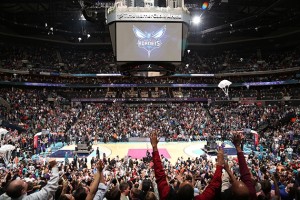
For instance, just as with other branding strategies, finding the right name goes a long way. As they say, you only get one chance to make a first impression, and the majority of the time, the name is that first impression, one that will continue to resonate throughout its time in use.
It is also the brand aspect that carries the most weight in exposure for the brand, as any reference to the team will more than likely use some aspect of its name. The name should resonate with the fans, as the NBA's Charlotte Hornets learned when they researched a rebrand from their old name as the Charlotte Bobcats.
When the first iteration of the Hornets relocated, the NBA gave Charlotte an expansion team, which was named the Charlotte Bobcats - an example of a name that had no history with the area and no emotional connection with the local population. After years of this disconnect, the team announced to much fanfare the return to the original Hornets name and colors, and the introduction of a logo that hearkened back to the prior Hornets logos.
The acknowledgement of the strength of the Hornets brand and the actions taken to return to this brand showed how much the Charlotte franchise valued their fan audience.
Branding a sports franchise can be a long, sometimes bumpy, journey. These brands are some of the most visible in the world, and their impact can be far-reaching. But by understanding the audiences, working to help meet their needs and allowing for a brand to settle a strong foundation, this global reach can be a welcome return.
Image sources:
https://www.nba.com/hornets/gallery/hornets-brand-identity-launch
https://matchstic.com/blog/tag/oregon-football-uniforms/
Addison Whitney is a global branding firm with a passion for building strong brands.
To learn more about Addison Whitney, visit our website at AddisonWhitney.com, or contact us here.
Back The Buzz
Back the Buzz
By Meara Lyons
It’s remarkable how sports can bring people together. People from all walks of life find community in sporting events and teams. What becomes even more fascinating is when a team evolves because of its fans and the resulting atmosphere is utterly electric.
What does this have to do with branding? Well, Charlotte, North Carolina has an NBA team – the Bobcats – and they’re going back to their roots. Last week, Bobcats’ owner Michael Jordan announced the NBA franchise’s decision to return to its original name, The Charlotte Hornets. Sure, there’s still some politics left to sort through (the NBA board of governors will officially vote on the name change in July), but you can already feel the excitement in Charlotte.
Hornets History
In 1985, the NBA planned to expand by four teams. George Shinn, an entrepreneur from Kannapolis, a city just north of Charlotte, wanted to bring a team to the area, so he assembled a group of local businessmen to head the franchise. North Carolina was steeped in college basketball (Duke, UNC-Chapel Hill, Wake Forest, NC State), so the leap to an NBA team was a natural one.
So, the team was born, and introduced with a name that had historical roots to the area. During the Revolutionary War, Lord Cornwallis, a leading British General, called the fighters in the Charlotte area a “veritable nest of hornets.”
Here’s some insight from an NBC Sports writer who lived in Charlotte during the Hornets heyday:
“You simply cannot overstate how deeply in love Charlotte was with the Hornets that first year and for a long while after that. The New Charlotte Coliseum sold out every game. Marginal players like Tim Kempton became Charlotte superstars. Everybody wanted to shoot like Dell Curry. Everybody wanted to gun like Kelly Tripucka. Everyone wanted to pester like Muggsy Bogues. Kurt Rambis was on that first team. Earl Cureton. Robert Reid. Every time the Celtics or Knicks or, especially, Los Angeles Lakers came to town, we felt like the world had finally discovered us. We had a real live NBA team — a terrible one, yes, but the team’s general awfulness did not dampen the spirit one bit. Losses were beside the point. Victories were like little daily miracles. Hey look: That’s Larry Bird!”*
In 2002, the Hornets played their last game in the Queen City – or so everyone thought – and the team moved to New Orleans. Even though the Hornets played in New Orleans from 2003-2013, the defunct Charlotte Hornets remained popular in its native city.
Back the Buzz
Three years ago, John Morgan, a local elementary art teacher, started a Facebook campaign called “We Beelieve,” and began gathering signatures to support his cause. Soon after, brothers Scotty and Evan Kent joined in the effort and created a website called, “Bring Back the Buzz.”
Earlier this year, the “Bring Back the Buzz” campaign hit a break when the New Orleans Hornets announced their own name change – to the Pelicans – thus freeing up the Hornets name for Jordan to pursue.
Flash forward to last Tuesday when Jordan announced the good news and reminisced a bit: “When I first played here years ago, the thing I was totally astounded by was the energy. I wanted to bring that energy back.”
The rebranding process should take about 18 months and an estimated $4 million, which includes an extensive repainting of the Time Warner Cable Arena as well as some loss of merchandise revenue as the team liquidates its current stock.
Nostalgic Charlotteans have already started to bring out their throwback Hornets shirts and hats – wearing the merchandise with pride, excitement and support for the switch.
The Bottom Line
We’re not naïve – our team needs a lot more than a rebranding to start winning games. But we’re optimists; maybe the buzz around the Hornets will get the players excited and give them the boost they need to start a positive momentum for the team. I mean, who doesn’t love a good Cinderella story?
Sources
*“A brief history of the Charlotte Hornets (and other things),” NBCSports.com, Joe Posnanski, https://goo.gl/gDbdV
“Michael Jordan summons Hugo the Hornet to Charlotte,” Charlotte Business Journal, Erik Spanberg, https://goo.gl/GJWWq
“Jordan confirms change to Hornets,” ESPN.com, AP, https://goo.gl/TSbfj
“Bobcats on borrowed time,” Charlotte Observer, Rick Bonnell, https://goo.gl/ciYEX
“Report: Lakers assistant Steve Clifford reaches deal to be Bobcats coach,” NBCSports.com, Kurt Helin, https://goo.gl/FrNMm
Mud Runs Enable Brands to Broaden Reach

Traditional running races are a thing of the past. The new craze is to throw some obstacles in the way. Like a mud pit, barbed wire, a climbing wall and a tangle of ropes. Then give these new obstacle course races gritty names like Warrior Dash and Tough Mudder to really intimidate people to sign up! Not only are people getting excited to participate in mud runs but brands are seizing the opportunity as well.
Obstacle races combine mud and trail runs with boot-camp obstructions and even mind games, all designed to result in mental and physical collapse. Last year in the U.S. roughly a million people signed up for events in the four most popular series: Warrior Dash, Tough Mudder, Spartan Race and Muddy Buddy. People now travel around the country and shell out money to willingly run these adventure races with mud crawls, fire pits, ice-cold showers and electric shocks. I have to admit when I looked at the Warrior Dash event video on their website, I instantly felt nervous yet fired up seeing people drenched in mud, climbing up wooden walls and jumping over fire. However, brands are embracing this new trend with nerves of steel.
Brands view this as an opportunity to get their product and showcase their company in front of an audience of young, active professionals. For example, the Windham, NY Warrior Dash in 2012 partnered with PERT Plus, the hassle-free shampoo brand and had a “Sudz Zone” shower trailer in the post-race festival area. With shampoo samples being provided to participants, brands have additional exposure for race attendees to use first hand and experience the product for themselves in hopes that participants will recall their experience next time they’re looking to buy shampoo. After all, if it can clean you up after one of these races it’s got to be good.
Brands also can gain exposure by having on site signage and tent space where they can directly connect and build relationships with existing as well as new customers. A few years ago I participated in an obstacle race and was immediately handed free apparel and samples provided by the sponsors that were at the event. They say it’s the little things in life and by getting a free koozie, a t-shirt and beer, not only was I benefitting from my new free stuff but I was also being exposed to a number of new brands that I might not ordinarily come in contact with, and I was one happy girl!
With mud runs and other adventure races gaining popularity, it’s no wonder brands are seizing the opportunity to sponsor races for additional exposure. As I write this, I’m already nervous and excited for the North Carolina Warrior Dash in 2013 I just signed up for! Obstacles, beer and bragging rights, do you have what it takes?
The Red, White, and Blue is Going Green!

By now everyone who is keeping up with the latest news on the Olympics is sure to know that team USA’s clothing isn’t very American. News broke recently that the clothing was actually manufactured in China. This deeply upset many Americans due to the fact that the textile industry in the United States continues to struggle, and the Olympic clothing line would have been a great boost to the economy and morale. Ralph Lauren, designer of the uniforms, quickly issued a statement late last week saying that the clothing for the opening and closing ceremonies for the next Olympics, the winter games taking place in Sochi, Russia, will indeed be made in the United States. While it might be too little too late to fix the situation in the mind of Americans, Team USA sponsors are looking for every available opportunity to promote the United States in a positive light.
Regardless of the Olympians casual clothing, there is good news when it comes to the athletic uniforms they will be sporting in the 2012 summer games. With recent advances in technology and the growing desire for everything we produce to be environmentally friendly in some way, the athletic gear for Olympians has undergone revolutionary changes since games past. Nike, designer of the athletic uniforms for many countries in the games, is one sponsor that has especially taken this to heart. In order to boost both Team USA and the United States with positive publicity, they have come up with extremely innovative ways to make sure that the uniforms worn during the games are environmentally friendly in order to distinguish us essentially as our own brand.
Among some of the cool new features Nike has planned for the Olympic athletes is a ground-breaking cleat that promises to deliver lightweight performance and high-speed control for soccer players in game situations. The Nike GS (short for Green Speed) is what Nike is calling its lightest, fastest, and greenest cleat ever. Every single element of the shoe was purposefully designed to reduce weight and waste, making it the lightest shoe Nike has ever created; only 160 grams for a size nine. The shoe features mostly recycled and renewable materials. For example, the sock lining is made of 100% recycled castor beans. “When you can deliver a boot that combines high end performance and a low environmental footprint that’s a winning proposition for players and planet” said Andy Caine, global design director for Nike Soccer. You’ll be able to catch a glimpse of these amazing cleats in action during the Olympics when they will be worn by Nike sponsored athletes from around the world.
The soccer pitch isn’t the only place you’ll be able to spot state-of-the-art equipment however. The United States Men’s basketball team will be wearing uniforms that were specially crafted by Nike to be some of the most revolutionary basketball uniforms ever. Each white jersey is made with 96% recycled polyester and an average of 22 recycled bottles, making it 58% lighter than the basketball uniforms worn in the Beijing Olympics and the lightest national team uniform ever. The difference in weight from past uniforms adds up to roughly a full can of soda! According to Nike, the shoes for the basketball players will also be innovative, being equipped with special new features. The shoes will feature sensors that can measure how high the players jump and transmit the results right to the player’s smart phone. Nike also designed FuelBand, a bracelet designed for all Olympians that measures their different daily activities, including how many steps they take to how many calories they burn each day. It will be interesting to see if all of this new and improved gear will help our Olympians perform better.
While the above mentioned efforts by Nike prove to be extremely fascinating and fun to learn about, it’s easy to forget that the Olympics are not just about finding ways to ensure that our athletes perform better than those from other countries. As one of the biggest events in the world, each country essentially becomes a brand of its own and how they promote it is entirely up to them. Our own country’s image in the Olympics comes down to much more than the clothes and uniforms. Supporting Team USA is about national pride and what we as a country believe is important. By incorporating eco-friendly and technologically advanced themes in many aspects of this year’s games we are showing the rest of the world that being sustainable and green is something that is important to us and is a value that we stand behind collectively as a country. It gives viewers around the world a more personal look into what it means to be American and in turn will make it easier for them to relate to our country as a brand. Environmental enthusiasts and Olympic fans everywhere are sure to agree that green looks good, but that the meaning behind it is what's most important.
Contributed by Nicole Juliano
Sponsors Benefit From Olympics, But Do The Athletes?

The 2012 summer Olympics based in London are only a few short weeks away. Anticipation and excitement alike have been mounting with televised trials and previews into what the games will hold this time around. Not only are the Olympics an exciting time for athletes all around the world, but for big brands looking to do some significant marketing as well. The Olympics are of special interest to big brands due to the lack of major sports events and decreased television viewing rates in the summer. The Olympics are a global event that can be enjoyed by the whole family and big brands everywhere are eager to be a part of it.
The money that will be in play from corporate advertisers in the 2012 London games has reached unheard of amounts, an estimated six to seven billion dollars from advertising alone. Brands everywhere are very aware of the impact that advertising during the Olympics can have. Visa and Samsung are two high-profile companies that saw significant improvements in their brands from Olympic sponsorships. For example, in 1986 Visa was ahead of MasterCard in market share by just a few points, but after being an official Olympic sponsor for many years they are now ahead by leaps and bounds. Samsung experienced success as well, surpassing Sony in total brand value in 2005. One brand hoping to become a success story as well is Citibank, who is hoping to utilize these Olympics to revamp their image. They have recently become an Olympic and Paralympics sponsor and plan on heavily promoting their Every Step of the Way social media campaign, in which fans can vote to distribute roughly $500,000 between eleven lesser known athletes and their charities. Fans have already voted to allocate nearly $11,000 dollars between two athletes.
Big brands clearly benefit significantly from advertising and creating sponsorships during the Olympics, but do the athletes benefit financially from the games? The answer might surprise you. Without big brands paying millions of dollars for sponsorships and exclusive rights, the Olympics might cease to exist. In order to protect these sponsors, athletes are not allowed to promote themselves, their brands, or their non-affiliated sponsors in any way during the weeks leading up to and the actual games themselves. Forget tweeting a picture of that energy bar you ate for breakfast if the company who made it isn’t an official sponsor. And don’t even dream of walking around Olympic Village with a Puma shirt on when Nike and Ralph Lauren have paid for the clothing rights. All of these strict rules make it easy for the brands sponsoring the games to overshadow the athletes.
American middle-distance runner Nick Symmonds is speaking up and challenging the highly restricted branding rules in place that seem to benefit everyone but the actual athletes in the games. Earlier this year Symmonds took to eBay to auction off a section of his skin on his deltoid, open to advertisers as an unconventional way for their twitter handle to be seen during the 2012 track and field season including the Olympics, which he did indeed qualify for. He had up to 85 different brands vying for the spot, but outdoor lifestyle agency Hanson Dodge snagged the space for $11,100. He has agreed to wear a temporary tattoo of the agency’s twitter handle on his arm, which is visible at all time except for when he is running in an actual race. Regardless, the company’s Facebook likes and Twitter followers have skyrocketed due to the stunt. Although other athletes haven’t taken such drastic measures, they have taken to Symmonds Facebook wall to support him as well as voice their own unhappiness with the restrictions.
Even though the 2012 Olympics are set to generate billions of dollars, most of the athletes competing in them are struggling to get by financially. More and more athletes are beginning to speak out against the limitations placed on athletes restricting them from wearing advertising or endorsements during the games which directly affects their individual earnings. The cost of training, coaching, and traveling for those hoping to qualify for an Olympic team is estimated to reach into six-figures yet many of these athletes earn well below that. For many, it is hard to secure a sponsorship and make a living off of their athletics alone. To make up for the difference, many athletes are forced to pick up part time jobs in order to sustain their dream. “I got tons of gear, but you can’t take a Nike shirt to the grocery store and buy food with it,” Says Ben Bruce, one of the United States top steeplechasers who was forced to go on food stamps after Nike refused to increase his pay.
All of this considered begs the question: who exactly is allowed to make money off of the Olympics? The games are a tradition centered on athletes and celebrating their amazing talents, but in recent years it seems they have turned into more of an opportunity to advertise. “This country runs on advertising. To rob athletes of the right to sell our advertising space?” asked Symmonds. The Olympics are no doubt a great opportunity for brands, but with more and more athletes rallying to express their unhappiness about the restrictions placed upon their ability to advertise it will be interesting to see if it is enough to inspire change in future Olympic Games.
Contributed by Nicole Juliano
Twitter Changes the Game With Sports Partnerships
Twitter Changes the Game with Sports Partnerships
Twitter is now aiming to change the meaning behind the hashtag for sports fans everywhere. If you’re a sports fan then you are probably up to date on the latest scores, news, and announcements in the sports world. You might even follow your favorite athletes and teams on Twitter for this very reason. It was this segment of users that Twitter was focusing on when they decided to partner with NASCAR, ESPN, and other major sports leagues to co-produce social experiences around major sporting events.
The partnership between Twitter and ESPN marks the first time the social network site has signed a contract with a television network. The deal will allow advertisers to buy spots on both ESPN and Twitter in a single, two-for-one buy. “Working together, ESPN and Twitter are giving marketers a clear and powerful way to link on-air and online social conversations around sports. It’s the first time advertisers can engage the audience around ESPN’s premier content across screens and where the conversation is happening on Twitter.” said Joel Lunenfeld, Twitter’s Vice President of Global Brand Strategy.
On Twitter, the hashtag’s basic function is to serve as a content filter. But through partnerships with sports leagues, Twitter is turning the hashtag into more of a content destination for users everywhere. Up until now, when users click on a hashtag they are shown a variety of tweets from other users with the same hashtag.
But that will change for various sports events, when Twitter will curate tweets from the sponsorships so when clicked on they will give users more of an exclusive, behind-the-scenes look at the event. The tweets will be monitored and organized by Twitter in order to show a variety of selected tweets pertaining to the sporting event, instead of just one account of unfiltered, unrelated fan posts. After the event, the hashtag will resume its normal function as a content filter.
Starting with NASCAR and the Pocono 400 race, which aired on TNT on June 10th, Twitter promoted the hashtag #NASCAR to create buzz around the race. During the event Twitter ran its first official television advertisement which promised a more unique and connected experience if you went to their website during the race. Whether it was a picture from within a racecar, a photo snapped by a VIP onlooker or a tweet from a mechanic or car manager, Twitter could show you more than what you would see just watching the race on television.
Twitter and ESPN also teamed up for the NBA Finals to promote the “game face” hashtag. Fans are encouraged to upload pictures of their best game face throughout the finals and attach the #Gameface hashtag. At the conclusion of each game, NBA Tonight analysts will share their favorite photographs on-air and feature some in a photo gallery on their website, before revealing the final winner who will receive a grand tour of ESPN headquarters in Bristol, Connecticut.
The partnership between Twitter and big name sporting events is a win-win situation aimed to show other brand marketers that Twitter's hashtag pages are capable of driving traffic. “When sports fans around the world see a hashtag displayed on the air during a game or race, that’s a signal to them that there is a bigger conversation happening on Twitter,” said Twitter CEO Dick Costolo. Future events will offer a similar interactive experience, with new themes and dedicated hashtags to drive the sports conversation on Twitter. Some of the events on the horizon for Twitter and partners include The X Games, Road to the BCS National Championship.
Contributed By: Nicole Juliano
NFL Brand Playoffs
In the upcoming round of the NFL playoffs, four teams will face off for a chance to play in the Super Bowl. But if it were a contest of brand strategy, which two teams would most deserve to compete on February 6th?
Names:
In the renaming of the New England Patriots in 1971 (originally the Boston Patriots), the Pats went from representing exclusively Massachusetts to encompassing New Hampshire, Vermont, Maine, Rhode Island, and Connecticut – a move that helped expand the brand’s fan base. The name ‘Patriots’ reflects back on the foundation of our country, when we valiantly defended our rights in a struggle for independence. By tying themselves to a national sentiment, the Patriots have a name that evokes emotion – fierce pride and loyalty – which can be felt from the entire nation. The name provides an avenue for traditions like The End Zone Militia (firing guns after a New England touchdown). The kind of traditions that develop loyalty and passion.
The Baltimore Ravens are named after the famous poem “The Raven” by Edgar Allen Poe, who spent his last few years in Baltimore. Personally, the poem doesn’t exactly bring to mind the ruggedness that a football game should carry. And ironically, Poe’s biography mentions the fact that he considered himself a “Bostonian”, not a Baltimore native. Nevertheless, a raven is not an animal to be messed with.
Logos:
The Patriot’s Logo is strong, simple and patriotic. It is recognizable and speaks to the dominance of their team by using bold colors and sharp lines. Using the colors of the American flag reinforces the national prominence of the team and reflects their strength and determination.
The Raven’s logo represents winning characteristics – bold and strong. While the logo may clearly be a raven, it lacks any personal or human connection. Alex Barrett, a writer for The Bleacher Report ranked the logo 26th in the NFL - “Despite the great purple / gold color scheme, we have a casual looking bird with a beak way too big and cheeks that look like they’re storing nuts for the winter.”
Winner:
With a stronger logo and a name that evokes pride and loyalty, the New England Patriots get my vote for the AFC Champions of branding.

Names:
The New York Giants, named after the baseball team formerly located in the Big Apple before their move to San Francisco in 1957, have one of the more abstract names in the NFL. While the name may have meant something to the baseball team, for the football team it is simply a hand-me-down. It may be seen as intimidating, but the name ‘Giants’ does not evoke any meaningful emotions on its own.
The 49ers, in a similar way to the Patriots, have history on their side. Their name brings to mind the glory days of the California gold rush, when there was nothing but hope of riches and a pioneer spirit. Again, this is something fans can reflect upon, which helps create a stronger connection to the team. However, the historical reference is not an obvious one, and without an understanding of the background you might wonder about the strange name.
Logos:
It’s difficult to illustrate an actual ‘giant’ in a logo, so New York leverages its initials in the design. But the lowercase letters and simplified design seem to contradict the message in the name. While “Giants” implies strength, intimidation and stature, the logo makes the team feel small and unassuming. Barrett argues that the team should have stuck with their old logo, “I didn’t much care for the logo from 1999 that looked exactly the same, but just spelled out ‘GIANTS,’ but looking back I think it was just a bit better.”
As with The Giants, making a logo for a name like 49ers is a challenge. To me, this logo doesn’t say “intimidating football team” - it could be a logo for anything. Barrett, however, finds merit in its simplicity, “I have always been a fan of the burgundy and gold color scheme. It is plain, yes; but it is also classy and one of the only good ‘oval’ logos left.”
Winner:
It was a close one, but the 49ers win by a margin for the historical significance of their name and for the bold simplicity of their logo.
Patriots vs. 49ers?
As far as the 2012 Super Bowl of branding goes, I have to go with the Patriots. I think the history behind their name and the boldness of their logo are unstoppable.
Did I mention that I'm a Pats fan?
Contributed by Christy O'Keefe


